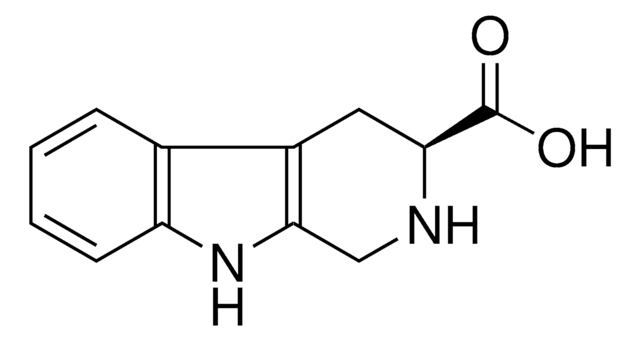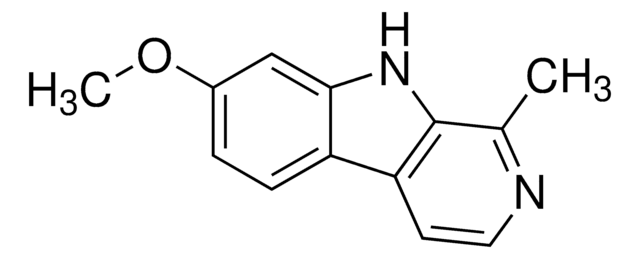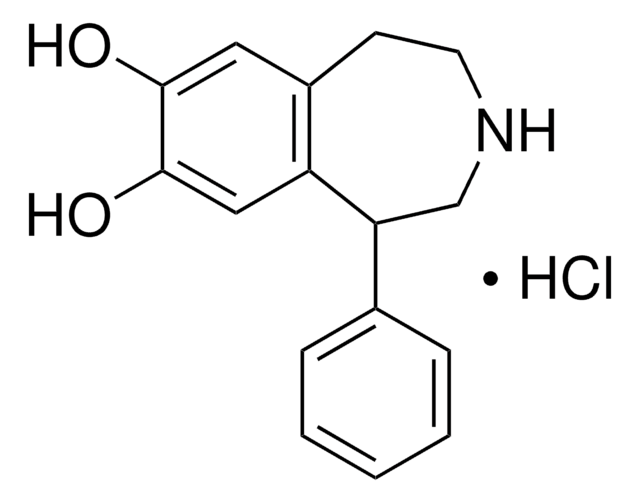SML2784
CMPD101 hydrochloride
≥98% (HPLC)
别名:
3-((4-Methyl-5-(pyridin-4-yl)-4H-1,2,4-triazol-3-yl)methylamino)-N-(2-(trifluoromethyl)benzyl)benzamide, 3-[[[4-Methyl-5-(4-pyridinyl)-4H-1,2,4-triazol-3-yl]methyl]amino]-N-[[2-(trifluoromethyl)phenyl]methyl]benzamide hydrochloride, Compound 101 hydrochloride, Cpd101 hydrochloride, Takeda101 hydrochloride
登录查看公司和协议定价
所有图片(1)
About This Item
推荐产品
质量水平
方案
≥98% (HPLC)
表单
powder
储存条件
desiccated
颜色
white to beige
溶解性
DMSO: 2 mg/mL, clear
储存温度
2-8°C
SMILES字符串
CN1C(CNC2=CC=CC(C(NCC3=CC=CC=C3C(F)(F)F)=O)=C2)=NN=C1C4=CC=NC=C4.Cl
InChI key
QBLGBXYDINNUFE-UHFFFAOYSA-N
生化/生理作用
Active site-targeting, potent and subtype-selective G protein-coupled receptor kinase GRK2/3 inhibitor with no inhibitory potency against GRK1/5.
CMPD101 is an active site-targeting, potent and subtype-selective G protein-coupled receptor kinase GRK2 & GRK3 inhibitor (human GRK2/3 IC50 = 54/32 nM with 3 μM ATP and tubulin dimer as substrate; bovine GRK2 IC50 = 290 nM with 0.5 mM ATP and bROS as substrate; no GRK1/5 inhibition at 125 μM). CMPD101 selectively inhibits GPR39 agonist-induced β-arrestin recruitment (by 94% at 10 μM against 30 μM GPR39-C3/50 μM ZnCl2), but not cAMP pathway desensitization in cultures and prevents β-arrestin2-biased D2R ligand UNC9994(1 μg/side bilateral local injection) from blocking NMDAR antagonist PCP (6 mg/kg i.p.)-induced locomotion (60%/12% blockage without/with 0.5 μg CMPD101 co-injection) in mice in vivo.
储存分类代码
11 - Combustible Solids
WGK
WGK 3
闪点(°F)
Not applicable
闪点(°C)
Not applicable
Yuji Shimizu et al.
Biochemical pharmacology, 140, 105-114 (2017-06-18)
GPR39, a G-protein-coupled receptor activated by zinc, reportedly activates multiple intracellular signaling pathways via Gs, Gq, G12/13, and β-arrestin, but little is known about downregulation of the receptor upon its activation. To our knowledge, this is the first report on
Seung-Ryoung Jung et al.
The Journal of general physiology, 147(3), 255-271 (2016-03-02)
Activated Gq protein-coupled receptors (GqPCRs) can be desensitized by phosphorylation and β-arrestin binding. The kinetics and individual contributions of these two mechanisms to receptor desensitization have not been fully distinguished. Here, we describe the shut off of protease-activated receptor 2
Arisbel B Gondin et al.
Frontiers in molecular neuroscience, 12, 104-104 (2019-05-24)
Differential regulation of the μ-opioid receptor (MOP) has been linked to the development of opioid tolerance and dependence which both limit the clinical use of opioid analgesics. At a cellular level, MOP regulation occurs via receptor phosphorylation, desensitization, plasma membrane
David M Thal et al.
Molecular pharmacology, 80(2), 294-303 (2011-05-21)
G protein-coupled receptors (GPCRs) are key regulators of cell physiology and control processes ranging from glucose homeostasis to contractility of the heart. A major mechanism for the desensitization of activated GPCRs is their phosphorylation by GPCR kinases (GRKs). Overexpression of
Anika Mann et al.
Science signaling, 12(574) (2019-03-28)
Agonists of the nociceptin/orphanin FQ opioid peptide (NOP) receptor, a member of the opioid receptor family, are under active investigation as novel analgesics, but their modes of signaling are less well characterized than those of other members of the opioid
我们的科学家团队拥有各种研究领域经验,包括生命科学、材料科学、化学合成、色谱、分析及许多其他领域.
联系技术服务部门






![1,2,3,4-四氢-9H-吡啶并[3,4-b]吲哚 98%](/deepweb/assets/sigmaaldrich/product/structures/181/460/3d58bc34-1b5c-4295-bbac-3b52085670e8/640/3d58bc34-1b5c-4295-bbac-3b52085670e8.png)
